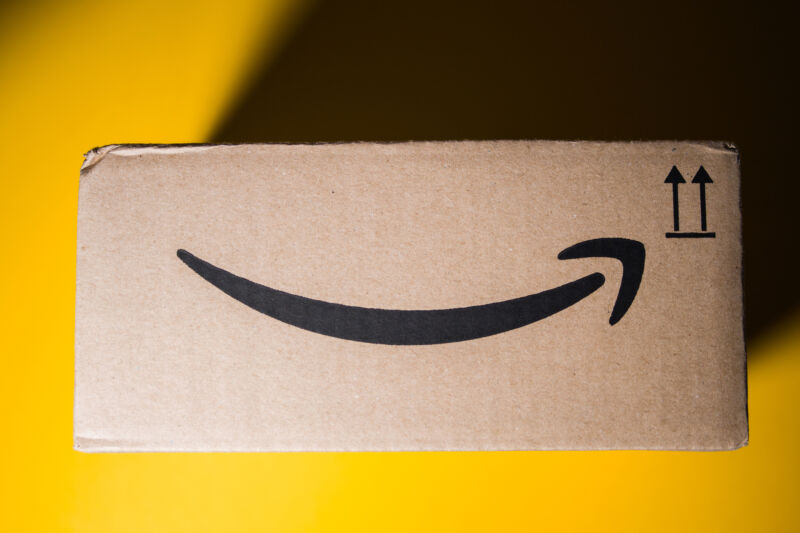A game of hide-and-seek —
Hundreds of millions of Amazon’s US customers have overpaid, class action says.

Amazon rigged its platform to “routinely” push an overwhelming majority of customers to pay more for items that could’ve been purchased at lower costs with equal or faster delivery times, a class-action lawsuit has alleged.
The lawsuit claims that a biased algorithm drives Amazon’s “Buy Box,” which appears on an item’s page and prompts shoppers to “Buy Now” or “Add to Cart.” According to customers suing, nearly 98 percent of Amazon sales are of items featured in the Buy Box, because customers allegedly “reasonably” believe that featured items offer the best deal on the platform.
“But they are often wrong,” the complaint said, claiming that instead, Amazon features items from its own retailers and sellers that participate in Fulfillment By Amazon (FBA), both of which pay Amazon higher fees and gain secret perks like appearing in the Buy Box.
“The result is that consumers routinely overpay for items that are available at lower prices from other sellers on Amazon—not because consumers don’t care about price, or because they’re making informed purchasing decisions, but because Amazon has chosen to display the offers for which it will earn the highest fees,” the complaint said.
Authorities in the US and the European Union have investigated Amazon’s allegedly anticompetitive Buy Box algorithm, confirming that it’s “favored FBA sellers since at least 2016,” the complaint said. In 2021, Amazon was fined more than $1 billion by the Italian Competition Authority over these unfair practices, and in 2022, the European Commission ordered Amazon to “apply equal treatment to all sellers when deciding what to feature in the Buy Box.”
These investigations served as the first public notice that Amazon’s Buy Box couldn’t be trusted, customers suing said. Amazon claimed that the algorithm was fixed in 2020, but so far, Amazon does not appear to have addressed all concerns over its Buy Box algorithm. As of 2023, European regulators have continued pushing Amazon “to take further action to remedy its Buy Box bias in their respective jurisdictions,” the customers’ complaint said.
The class action was filed by two California-based long-time Amazon customers, Jeffrey Taylor and Robert Selway. Both feel that Amazon “willfully” and “deceptively” tricked them and hundreds of millions of US customers into purchasing the featured item in the Buy Box when better deals existed.
Taylor and Selway’s lawyer, Steve Berman, told Reuters that Amazon has placed “a great burden” on its customers, who must invest more time on the platform to identify the best deals. Unlike other lawsuits over Amazon’s Buy Box, this is the first lawsuit to seek compensation over harms to consumers, not over antitrust concerns or harms to sellers, Reuters noted.
The lawsuit has been filed on behalf of “all persons who made a purchase using the Buy Box from 2016 to the present.” Because Amazon supposedly “frequently” features more expensive items in the Buy Box and most sales result from Buy Box placements, they’ve alleged that “the chances that any Class member was unharmed by one or more purchases is virtually non-existent.”
“Our team expects the class to include hundreds of millions of Amazon consumers because virtually all purchases are made from the Buy Box,” a spokesperson for plaintiffs’ lawyers told Ars.
Customers suing are hoping that a jury will decide that Amazon continues to “deliberately steer” customers to purchase higher-priced items in the Buy Box to spike its own profits. They’ve asked a US district court in Washington, where Amazon is based, to permanently stop Amazon from using allegedly biased algorithms to drive sales through its Buy Box.
The extent of damages that Amazon could owe are currently unknown but appear significant. It’s estimated that 80 percent of Amazon’s 300 million userbase is comprised of US subscribers, each allegedly overpaying on most of their purchases over the past seven years. Last year, Amazon’s US sales exceeded $574 billion.
“Amazon claims to be a ‘customer-centric’ company that works to offer the lowest prices to its customers, but in violation of the Washington Consumer Protection Act, Amazon employs a deceptive scheme to keep its profits—and consumer prices—high,” customer’s lawsuit alleged.